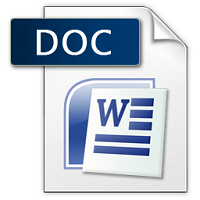₹198.00
Scroll down for Match your questions with Sample
Note- Students need to make Changes before uploading for Avoid similarity issue in turnitin.
Another Option
UNIQUE ASSIGNMENT
0-20% Similarity in turnitin
Price is 700 per assignment
Unique assignment buy via WhatsApp 8755555879
Description
| SESSION | AUG/SEP 2023 |
| PROGRAM | MASTER OF BUSINESS ADMINISTRATION (MBA) |
| SEMESTER | III |
| COURSE CODE & NAME | DHRM302-MANAGEMENT & ORGANISATIONAL DEVELOPMENT |
Assignment Set – 1
- Describe the steps in OD process. 10
Ans 1.
Organizational Development (OD) is a dynamic values-based approach to systems change in organizations and communities; it strives to build the capacity to achieve and sustain a new desired state that benefits the organization or community and the world around them. Here is an elaboration of the steps involved in the OD process:
- Entry and Contracting
The OD process begins Its Half solved only
Buy Complete from our online store
https://smuassignment.in/online-store/
MUJ Fully solved assignment available for session SEPT 2023.
Lowest price guarantee with quality.
Charges INR 198 only per assignment. For more information you can get via mail or Whats app also
Mail id is aapkieducation@gmail.com
Our website www.smuassignment.in
After mail, we will reply you instant or maximum
1 hour.
Otherwise you can also contact on our
whatsapp no 8791490301.
- Discuss the strategies to manage change with examples. 10
Ans 2.
Managing change effectively is crucial for organizations to remain competitive and adapt to evolving environments. This discussion will explore various strategies to manage change, providing real-world examples to illustrate these approaches.
Understanding the Need for Change
The first step in managing change is recognizing the need for it. This involves assessing the current state of the organization and identifying areas that require improvement or adaptation. For example
- Explain Lewin’s model of Organizational Change. 10
Ans 3.
Lewin’s Model of Organizational Change: An Insightful Framework for Business Transformation
Understanding the dynamics of organizational change is essential for businesses looking to adapt and thrive in an ever-evolving marketplace. Among the various models developed to explain and guide this process, Kurt Lewin’s model stands out for its simplicity and effectiveness. Introduced by social psychologist Kurt Lewin in the 1940s, this model breaks down the change process
Assignment Set – 2
- Discuss the factors influencing ethical judgements. 10
Ans 4.
Factors Influencing Ethical Judgments
Ethical judgments, the processes by which individuals discern right from wrong and act accordingly, are influenced by a myriad of factors. These factors span from personal beliefs to cultural norms, shaping our ethical perspectives and decisions in various contexts.
Personal Beliefs and Values
At the core of ethical judgments are personal beliefs and values. These are shaped by an individual’s upbringing,
- Discuss the different types of qualitative evaluation methods available to managers. 10
Ans 5.
Qualitative evaluation methods are crucial tools for managers seeking to understand the intricate dynamics of their organizations. Unlike quantitative methods, which rely on numerical data, qualitative evaluations delve into the subjective experiences, opinions, and motivations of employees, stakeholders, and customers. These methods provide nuanced insights that are essential for
- Explain the types of techno-structural interventions with the help of suitable examples. 10
Ans 6.
Techno-structural interventions are organizational development techniques aimed at improving the efficiency and effectiveness of a company’s structure and technology. These interventions focus on aligning organizational structure, technology, and processes with its strategic objectives and can be categorized into several types, each with its own set of examples.
- Structural


